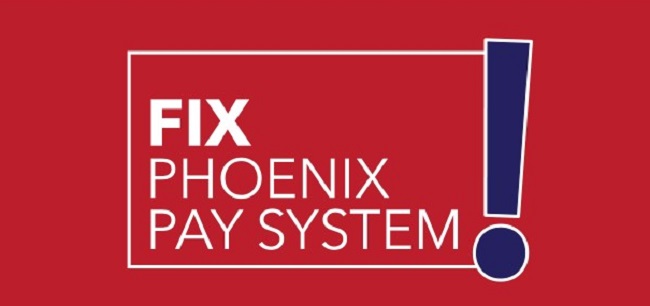Even as talks between the government and federal workers affected problems with the Phoenix payroll system continue, the government said the cost of repairing the trouble-plagued payroll system could reach as high as $25 million.
This development came out as members of the Public Service Alliance of Canada (PSCA) who say more than 80,000 federal workers have been experiencing financial problems because they were improperly paid or not paid at all due the glitches with the Phoenix system, met with Public Services and Procurement Minister Judy Foote in St. John’s last Friday.
Foote told the workers that the government’s estimate of the cost to fix the system has shot up by as much as $10 million since July but explained that her office which if overseeing the system, is not focused on savings, according to a report from CBC.
“I’m really interested in solving and fixing Phoenix, and we are going to do whatever we can to do that,” she said.
Foote said the government remains on schedule to clear the backlog of payment issues by the end of October this year.
RELATED CONTENT
Learning from the Phoenix disaster: Communication is key for payroll
Phoenix payroll system failed DND workers
Why some government workers might need emergency cheques on payday
Foote used the meetings to assure union representatives that the government is still on track to clear the backlog of issues by the end of October.
Meanwhile, PSAC National President Robyn Benson and Government Services Union President Donna Lackie visited workers at the Miramichi Pay Centre and held a town hall meeting to hear the members’ concerns.
“At this point in time we’re trying to work together because these are issues that this employer needs to address,” said Benson. “We’re working to help the members who are administering the pay system and to address the pay issues, particularly for those whose pay has been disrupted by the system.”
Under the Transformation of Pay Administration initiative, the government adopted the Phoenix payroll system in 2009. The new system replaced an older one which had been in place since the 1970s.
The switch was meant to centralize and standardize payment administration and the government estimated it would save as much as $70 million a year starting in 2016 because of the automated system.
Instead a nightmare of bugs, glitches and complaints followed soon after the new system was activated. Many government employees claimed that they were receiving smaller paycheques, others said they were not getting paid at all.
Workers at the Miramichi Pay Centre were also placed under a lot of stress due problems with the system and complaints they were receiving. Some had sought stress leave because of the situation.

